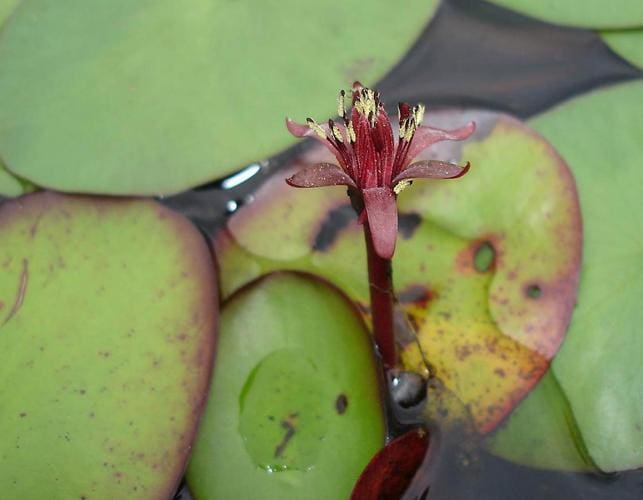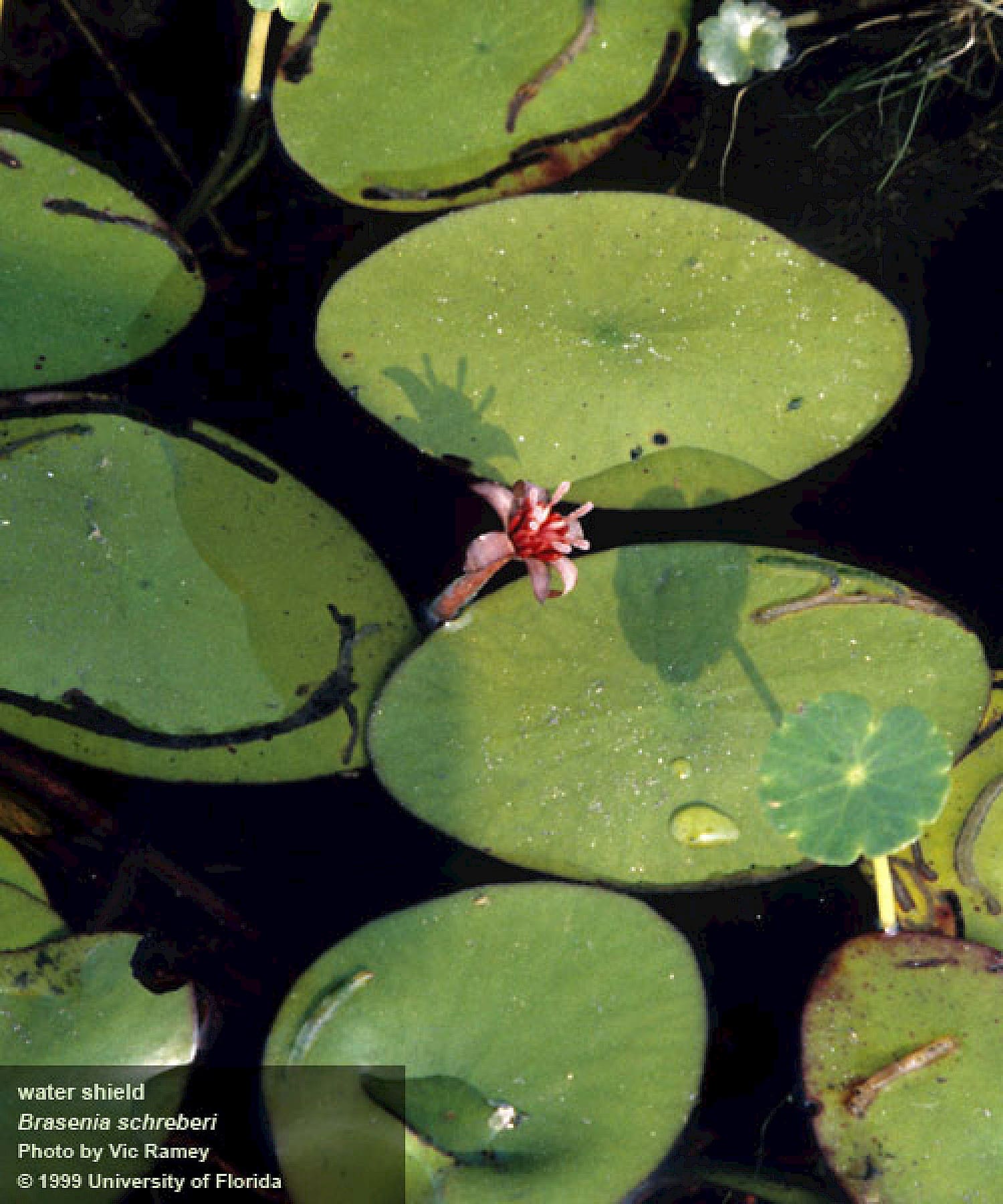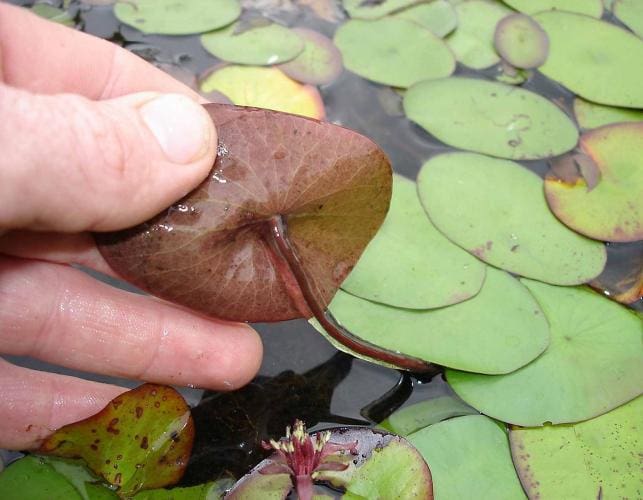Valuing the intricacies of the natural world, this article revolves around an exploration of the aquatic plant known as Watershield (Brasenia schreberi). As you progress through this scholarly examination, you will uncover the morphology, ecology, and relevance of this enigmatic water plant. A precise clarification of its aesthetic appeal, and its potential usages, aims to enhance your understanding and appreciation of this remarkable aquatic species. Continued reading will surely yield insights into the ecological importance, cultivation methods, and numerous intriguing characteristics of the Watershield plant.

Definition of Watershield
Watershield refers to an aquatic plant known for its distinct features and purposeful qualities peculiar to both aquatic ecosystems and human uses. Scientifically classified under the Nymphaeales order and Brasenia family, this plant encompasses a single species, Brasenia schreberi. ‘Watershield’ is its common English name while it is known by a variety of other names globally, reflecting its widespread recognition and utilization across continents.
Scientific Classification and Common Names
Watershield comes under the plant kingdom and falls within the Brasenia genus. Its binomial nomenclature is Brasenia schreberi. The global presence of watershield is reflected in its numerous common names such as “doll’s eyes”, “water cabbage”, and “red water lily” amongst others.
Distinctive Features of the Plant
The appearance of watershield is unique, as the plant boasts a layer of gelatinous substance covering its underwater stem and the underside of its leaves. It possesses floating, oval-shaped leaves of dark green color and distinctive purple flowers, making it a favorable choice amongst plant enthusiasts.
Habitat and Distribution
Watershield is found globally across various continents such as South America, Asia, North America, and Australia. It is identified in a wide array of different aquatic environments such as slow-moving streams, lakes, and ponds.
Physical Characteristics of Watershield
Description of the Leaves
Almost entirely floating on water surfaces, the leaves of watershield span around 10-20 cm in length and 5-10 cm in width. The top surface of the leaves is smooth while the bottom layers are covered in a protective, mucilaginous coating that hosts a myriad of microorganisms, adding to the overall biodiversity of their habitat.
Examination of the Stem
The stem of watershield typically extends from the mud substrate to the water surface. It can reach lengths of several feet and is enveloped in a thick gel-like coating that serves as a hostile environment for parasites.
Identification of Flowers and Fruits
Watershield is recognized by its fragrant, cross-pollinated flowers. These unique flowers are purplish-brown in color, possessing a distinct three-petal structure. Following pollination, the plant produces fruits that are elliptical, covered in a jelly-like substance, and generally contain around two to four seeds.
Life Cycle of Watershield
Seed Germination and Initial Growth
Like many aquatic plants, watershield propagates in the form of seeds that germinate underwater. These seeds are typically dispersed by water currents into favorable environments where they anchor themselves into the substrate. The germination of these seeds sees the formation of a shoot that grows toward the water surface, eventually developing roots and leaves.
Maturation Phase
The plant then enters a maturation phase wherein it fully develops its leaf systems, producing a protective gel coating that provides a line of defense against potential predators. During this phase, the plant undergoes substantial radial growth, expanding its reach across the water surface.
Reproductive Process and Propagation
For reproduction, the flowers of the watershield emerge above the water surface and undergo pollination through insects. The flower then sinks below the surface, and the fertilized ovule develops into a fruit, which afterwards releases seeds that sink to the bottom, starting a new cycle.
Habitat Requirements
Ideal Water Conditions
Watershield is typically found in acidic, nutrient-rich waters. Although the plant can tolerate a wide range of water chemistries, optimal growth is seen under conditions with a neutral to slightly acidic pH. The plant prefers calm, slow-moving waters, but can also be found in shallow ponds and lakes.
Soil or Substrate Preferences
This aquatic plant favors muddy substrates, rich in organic materials where it can anchor its roots and access the nutrients necessary for growth.
Light and Temperature Needs
As with many floating plants, watershield requires ample sunlight, though it is capable of managing under partial shade. In terms of temperature, it is resilient and can withstand a wide range; however, it thrives in warmer climates of at least 15°C.

Ecological Role of Watershield
Role in the Aquatic Ecosystem
Watershield performs an essential role in aquatic ecosystems by providing cover and habitat for many fish and invertebrate species. Its leaf canopy serves as a refuge for young fish and frogs, while the flowers attract a variety of pollinating insects.
Contribution to Biodiversity
The plant contributes significantly to local biodiversity by supporting a wide range of microorganisms on its mucilaginous coating. These microbial communities, in turn, can influence the chemistry and environmental dynamics of the body of water where the plant lives.
Impact on Water Quality
Watershield can play a part in water purification by absorbing heavy metals and other pollutants from the water, improving overall water quality. Moreover, their extensive root systems can help stabilize sediment and reduce erosion, thus preventing undesirable turbidity in the water.
Human Uses of Watershield
Traditional Medicinal Uses
Traditionally, watershield has long been utilized in medicine for its antimicrobial and antifungal properties. Specifically, in some parts of Asia, it is used to treat skin diseases, diarrhea, and dysentery, whilst also being a source of vitamins A and C.
Relevance in Aquascaping
Watershield is a popular choice among aquatic plant enthusiasts due to its intense green foliage and attractive flowers. It is used in creating aquascapes – underwater landscapes – enhancing the aesthetic appeal and contributing to the overall biodiversity and oxygen levels of the aquatic environment.
Culinary Uses Around the World
In terms of culinary use, the young leaves and stems of watershield can be consumed either raw or cooked. In particular, in Asia, it’s a common ingredient in soups and stir-fries, appreciated for its unique flavor and nutritional benefits.
Conservation Status and Threats
Current Conservation Status
As a globally common plant, the conservation status of watershield is not currently under threat. However, local populations may be impacted by habitat modifications, excessive harvesting, and pollution.
Potential Threats and Causes of Decline
Key threats to watershield are primarily human-induced habitat changes, such as waterfront development, water pollution, and eutrophication caused by excessive nutrients from agricultural runoff. Overharvesting for its culinary and medicinal uses also puts pressure on local populations.
Conservation Measures and Recovery Plans
Efforts to preserve watershield are mostly implemented on a local level and include protection of habitats, regulation of harvesting, and in some cases, restoration of local watershield populations through replanting.
Cultivation and Care of Watershield
Guidelines for Cultivation
During cultivation, watershield seeds should be planted in muddy substrates and submerged in water. The water’s depth needs to be adequate for the plant to extend its stem and float its leaves at the surface. In areas with freezing winters, young plants can be stored indoors or in a cool greenhouse until the following spring.
Common Issues and Solutions in Caring for Watershield
Common issues one might encounter include competition with faster-growing aquatic species and susceptibility to certain pests or diseases. Solutions involve regular weeding to regulate competing species and maintaining good water quality to prevent diseases.
Techniques for Propagation and Spreading
This perennial plant naturally reproduces by seeds and can also clone itself via expansion of its rhizome. Care should be taken to ensure enough spacing between plants to allow their radial growth. For propagation, one can uproot a mature plant and divide its rhizome into segments, then replanting them.

Scientific Research on Watershield
Most Significant Findings
Scientific studies on watershield have unveiled its potential for phytoremediation due to its efficiency in absorbing heavy metals from water. Other studies have confirmed the plant’s antimicrobial properties, specifically its effectiveness against certain bacterial and fungal strains.
Ongoing Studies and Potential Future Research Directions
Ongoing research is focusing on the plant’s capacity for removing other forms of pollutants and its potential medicinal benefits. As for future research directions, scholars are seeking to understand better the coexistence and competition dynamics between watershield and other floating plants in various environmental conditions.
Frequently Asked Questions about Watershield
Common Misconceptions or Confusions About Watershield
One common misconception is that all parts of the plant can be eaten. It is vital to remember that only young leaves and stems are consumable. Another confusion is its identification, as watershield may be mistaken for other floating plants due to its similar appearance, which brings us to the next point.
Beginner’s Guide to Identifying Watershield
One can easily identify watershield by both its leaf shape and the distinct gelatinous coating on its underside and stems. Remember, its oval leaves float beautifully on water surfaces, and a slight touch beneath a leaf will reveal its gel-like substance, quite unusual for many aquatic plants.
Clarifications on Use and Safety Issues
Care must be taken when harvesting watershield for consumption or medicinal usage with thorough cleaning to remove all traces of the jelly-like substance. In addition, individuals should refrain from harvesting watershield from polluted environments due to the plant’s ability to absorb contaminants.